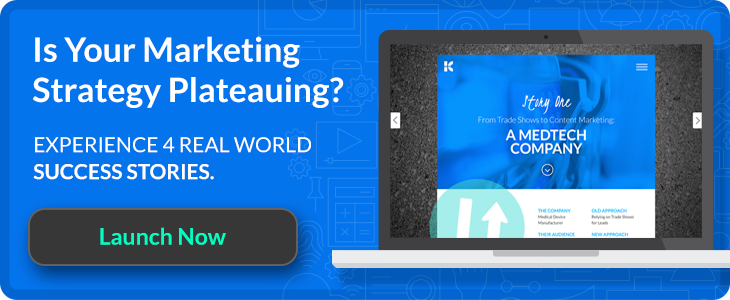
Spotlight: Transitioning to HubSpot for Social Media Marketing

 Social media management has two sides. Fundamentally, it's about community engagement, brand identity and transparent conversation. But when we flip the coin, most companies need hard proof social positively impacts their bottom line. For most small companies or stagnant brands, the ROI of social media is notoriously gray—post a few updates and hope for the best—but there is software out there dedicated to providing the data to prove long-term ROI. This is one of the areas where HubSpot intends to grow.
Social media management has two sides. Fundamentally, it's about community engagement, brand identity and transparent conversation. But when we flip the coin, most companies need hard proof social positively impacts their bottom line. For most small companies or stagnant brands, the ROI of social media is notoriously gray—post a few updates and hope for the best—but there is software out there dedicated to providing the data to prove long-term ROI. This is one of the areas where HubSpot intends to grow.
Here at Kuno, we do all things through HubSpot. Lead scoring, content management, data reporting—the works. But it wasn’t until recently, maybe a few months ago, we decided to transition our social media efforts onto the HubSpot platform.
Admittedly, we were hesitant about the transition; previously, HubSpot's social tool seemed underdeveloped compared to expert social publishing tools like Hootsuite or Buffer. Yet, it was obvious HubSpot could provide something no other tool could: seamless integration across all our marketing efforts.
Unique Features
As HubSpot continued to develop its social offerings, its goal was to allow marketing to become hyper-personal—an ideal achievement in the realm of digital marketing. These updates helped Kuno jump on board and realize the benefits of HubSpot for social media marketing.
Here’s a quick list of features we found to be unique to HubSpot's social offerings:
Social Inbox
As the latest feature released by HubSpot, the Social Inbox is an all-inclusive feed reporting every social interaction across all platforms associated with a clients website. It shows how followers, new and old, impact a client’s web presence through social engagement and conversation. Think of Twitter's “Notification” tab but on steroids, providing admins with data on every user who interacts with any social channel (however many times).
Contacts
HubSpot social is connected to your contact database, clearly identifying users who not only interact with social content, but who have visited and engaged with your website and emails. This is especially helpful in weeding out potential leads from everyday social noise. This is deep data personalization at its finest.
Monitoring
Although not as extensive as Hootsuite’s multi-stream dashboard, HubSpot’s social monitoring uses the data compiled from other HubSpot features (contacts, downloads, campaigns) to create customized streams that show social content created by qualified leads. This, in addition to targeted keywords, enables acute listening and engagement opportunities unavailable in stand-alone social tools.
Publishing
Publishing social updates through HubSpot is similar to other publishing platforms (customizable scheduling and branded URLs is now expected in most), yet the advantage to publishing through HubSpot is the ability to connect your campaign to any individual post, therefore measuring direct impact of social on any particular campaign. Not only can we see which social post get the most engagement, but now we can track the entire customer journey, from Twitter click to website sale.
When it comes to sharing content, the HubSpot Chrome Extension behaves just like the Buffer extension, scheduling any web page your browser is viewing with just a few clicks. But HubSpot takes it one step further, offering native image editing (cropping, filters and effects) to any uploaded photo or graphic accompanying your social post—which is great for today’s visually oriented web.
Reach
And yes, HubSpot measures reach and growth, as well. Admins have the option to break down and measure social channels individually or deliver a comprehensive report on all connected social outlets. Accumulated reach and clicks are then included in traffic reports, revealing your most popular content and how social affects it.

Still Growing
It’s clear HubSpot has finally started to invest in social, but the competition is fierce. For instance, established SaaS companies that are entirely invested in the social niche—such as Hootsuite, Buffer, Tweetdeck and Spreadfast to name a few—aren’t going anywhere soon.
Furthermore, it’s hard to dismiss the advantage of posting directly to Facebook, where admins can reference data points (from Insights) to target age, location and gender for any individual post. HubSpot does not offer targeting, nor does it offer sponsored social content management, now a necessity for reaching the right types of customers.
Inbound is growing, and, with it, so must social. It would be in all our best interest to keep a keen eye out for future updates and partnerships focused on propelling the future of social media marketing.
Have you tried HubSpot's social media tools yet? Share your favorite part with us in the comment section below!
 Andrew Osegi is a Content Associate with Kuno Creative and lives in the Live Music Capitol of the World, Austin, TX. His focus is in content publishing, social media management and community engagement. He likes breakfast tacos, barbecue and researching the ever-changing trends between technology and culture.
Andrew Osegi is a Content Associate with Kuno Creative and lives in the Live Music Capitol of the World, Austin, TX. His focus is in content publishing, social media management and community engagement. He likes breakfast tacos, barbecue and researching the ever-changing trends between technology and culture.
Photo Credit: HubSpot Twitter, Mike Licht




